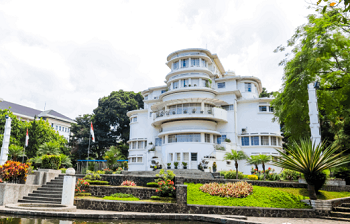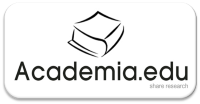Author Guidelines
Dear authors, if you have difficulties in journal registration, you can contact parhan.muhamad@upi.edu email and you can contact telephone number +6287820207878, thank you
General Guidelines
- Every article submited to Religio Education should be written in English and has never been published or is not in the process of being submitted for publication in other media and does not contain plagiarism elements.
- Articles can be in-depth analysis of interpretation, literature review, case studies, and from research.
- Please make the page setting of your word processor to A4 format with the margins: bottom 3 cm and top 3 cm, left 3 cm and right 2.5 cm. For the body of the paper, please use Garamond 12, single spacing.
- Should always be written in with the fonts Garamond 12, especially also in the figures and tables. The length of article is 5000-7000 words including all pictures, tables, nomenclature, references, etc.
- Articles that are submitted must be in accordance with focus and scope of journal, which consists of: Islamic Studies; Islamic Education; Social Religion; Religion & Culture; General Education; and Philosophy of Religion.
Title of Article: Write A Sentence That Describes The Substance Of The Article; Maximum 16 Words; Use Center Alignment; Use Garamond 12 Bold; Use Capitalize Each Word; Line Spacing Single
Abstracts: use garamond 12, Bold, Capitalize Each Word, left aligment.
Write abstract in English, use Garamond 10 for body of the abstract with one spacing between lines, justified, consists of a maximum 200 words. Inform; the issue, purpose (contains objectives of the research), method (delivers data collection of the research), results of the research (refers to collected data as an effort to answer research question), impact and conclusion (summary of the finding and the result of the research)
Introduction (Garamond 12, Bold, left aligment)
The introduction should cover three things: 1) the problem being studied; 2) the urgency of raising the problem being studied; and 3) the way the author discusses the problem. For this reason, the author needs to pay attention to the following points: First, the author describes the core of the problem to be discussed, the background, and the position of the author's article in the middle of related studies. In this case, the author can describe the relationship between the article and the articles or other works that have been published, conduct a brief review of the articles or works, and show the originality of the author's article. Second, the authors describe important aspects related to the problem being studied. In this case, the author can also mention the reasons and purposes for discussing the problem in the article in question. This section is intended to show the scholarly contribution of the author in the articles he writes-that the issues raised by the author are very important for publication.
Please make the page setting of your word processor to A4 format with the margins: bottom 3 cm and top 3 cm, left 3 cm and right 2.5 cm. For the body of the paper, please use Garamond 12, single spacing. Should always be written in with the fonts Garamond 12, especially also in the figures and tables. The length of the article in the introduction is 1000-1500 words including all figures and tables
Methods (Garamond 12, Bold, left aligment)
Method consists of description of research type, data collection, data source, data type, and data analysis. Written in paragraph form up to 500 words
Results and Discussion
Findings (can be in form of subheading)
Informing a number of important (original) field data obtained from questionnaires, surveys, documents, interviews, observations, literature review and other data collection techniques, containing 3000-5000 words, use Garamond 12, single spacing, and APA Style six edition and management references by mendeley, can be completed with tables or graphs to clarify the results.
All figures and tables should be centered and numbered consecutively. Tables (refer with: Table 1, Table 2,…) should be presented above the table contain in center alignment. A descriptive title should be placed after table title (refer with: Table 1, table 2,…) above each table. The source of the table should be placed below the table in right alignment. Example:
Table 1. Summary of Islamic Education Student
No. | Name | Male/Female | Rate |
1. | Andi | Male | Advance |
2. | Dewi | Female | Beginner |
Source: Book of SMU Labschool UPI
Figures (refer with: Figure 1, Figure 2,…) should be presented below each figures and followed by the descriptive of the figure

Figure 1. Isola Building
Analysis
Presenting the data that has been interpreted and analyzed by a specific technique and has been processed by the specific theory (also from researcher idea). Citations in Text use APA style sixt edition using manager reference (mendeley).
Conclusion
Write succinctly and clearly the result of research then describe the logical consequence in developing science and praxis of Islamic education (Conclusion is not indented and uses Garamond 12).
References
Contains books with a maximum published year of the last 10 years and journals of a maximum of the last 5 years and is arranged alphabetically. References contain at least 80% of the journal.
Books
Al-Bar, Ibnu Abd. 2017. Al-Intiqāi Fī Fadhāil Al-Aimmah Ats-Tsalātsah Al-Fuqahā. Beirut: Dār al-Kutub al Ilmiyyah.
Hasbullah, Abu Hasan. 2012. Teknologi Makin Maju, Pemikiran Makin Mundur. Selangor: Utusan Karya.
Journal
López, Fernando Bravo. 2019. “Towards a Definition of Islamophobia: Approximations of the Early Twentieth Century.” Ethnic and Racial Studies 34(4):556–573. doi: 10.1080/01419870.2010.528440
Marranci, Gabriele. 2018. “Multiculturalism, Islam and the Clash of Civilisations Theory: Rethinking Islamophobia.” Culture and Religion 5(1):105–117. doi: 10.1080/0143830042000200373.
Parhan, Muhamad, Mohammad Rindu Fajar Islamy, Nurti Budiyanti, Risris Hari Nugraha, and Pandu Hyangsewu. 2020. “Responding to Islamophobia by Internalizing the Value of Islam Rahmatan Lil Alamin through Using the Media.” Islam Realitas: Journal of Islamic and Social Studies 6(2):137–149. doi: http://dx.doi.org/10.30983/islam_realitas.v6i2.3695.
Copyright Notice
Authors who publish with this journal agree to the following terms:
(1) Copyright of the published articles will be transferred to the journal as the publisher of the manuscripts. Therefore, the author confirms that the copyright has been managed by the publisher.
(2) Publisher of Religio Education is Departemen Pendidikan Umum, Universitas Pendidikan Indonesia (UPI).
(3) The copyright follows Creative Commons Attribution–ShareAlike License (CC BY SA): This license allows to Share — copy and redistribute the material in any medium or format, Adapt — remix, transform, and build upon the material, for any purpose, even commercially.
Author Fees
This journal charges the following author fees.
Article Submission: 0.00 (USD)
Authors are not required to pay an Article Submission Fee as part of the submission process to contribute to review costs.
Article Publication: 0.00 (USD)
If this paper is accepted for publication, you will not be asked to pay an Article Publication Fee to cover publications costs.

PNG.png)













.png)


.jpg)